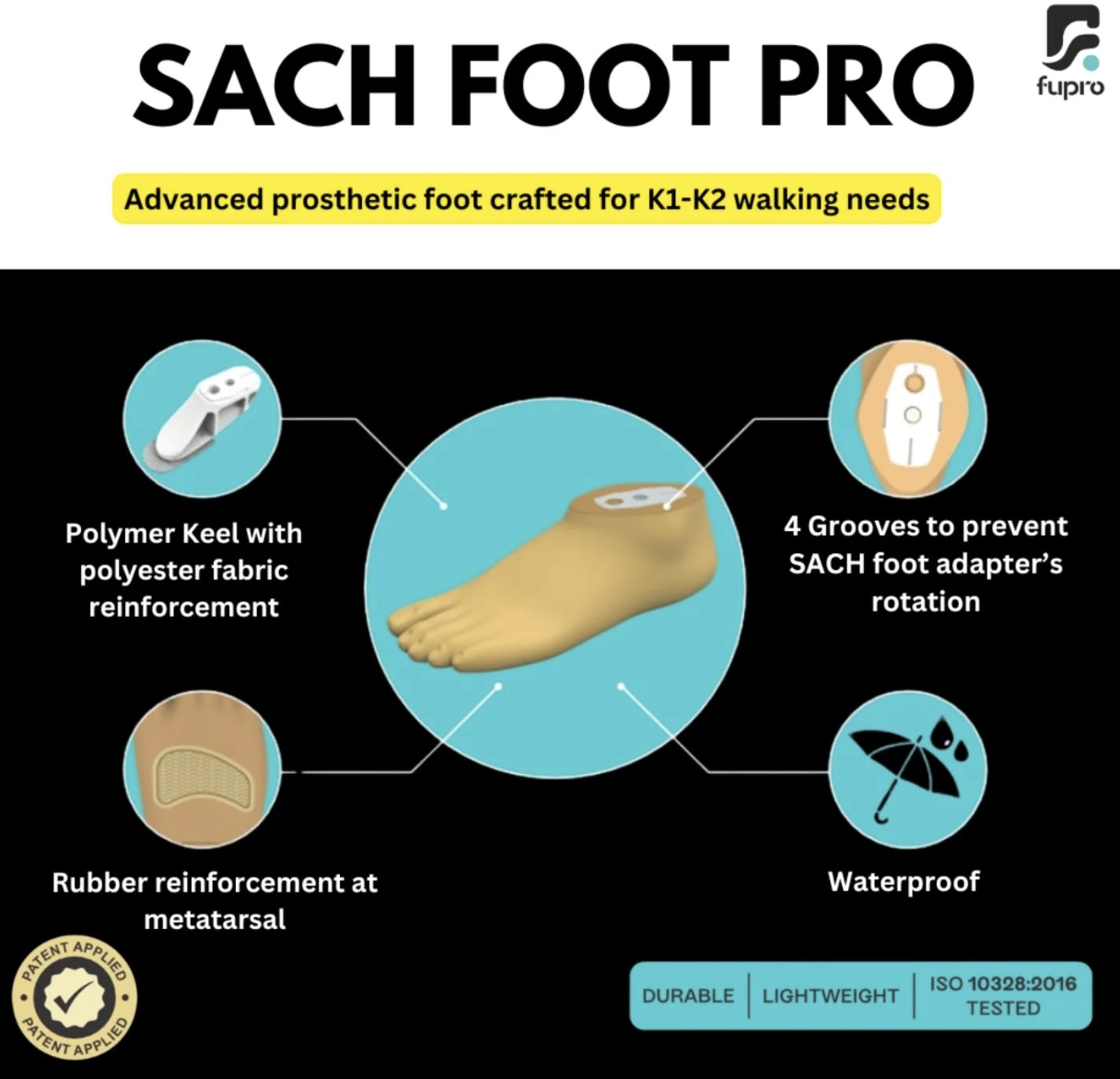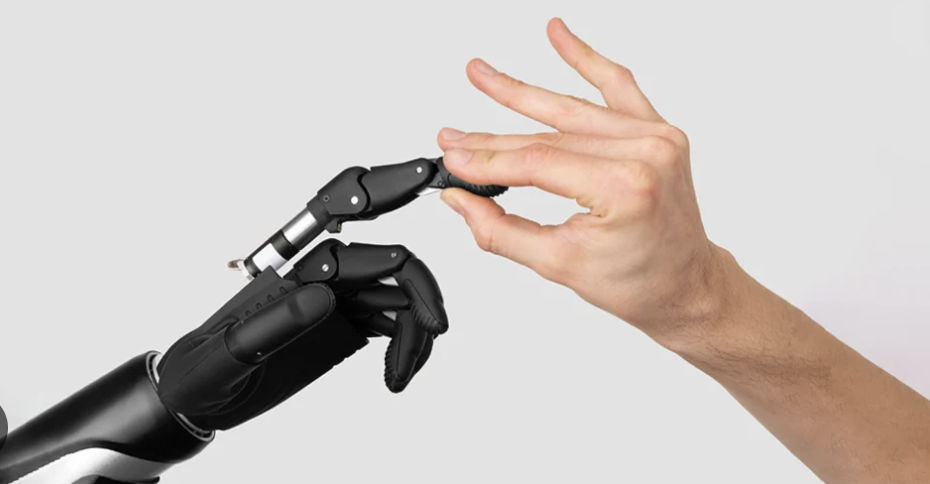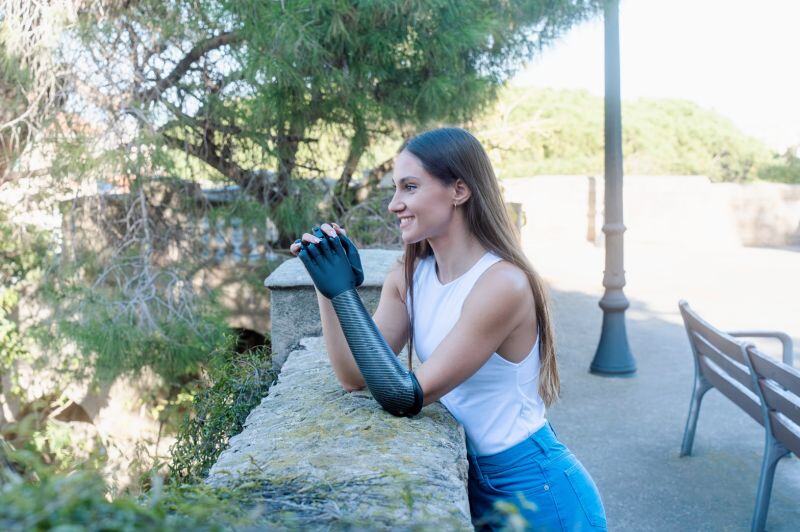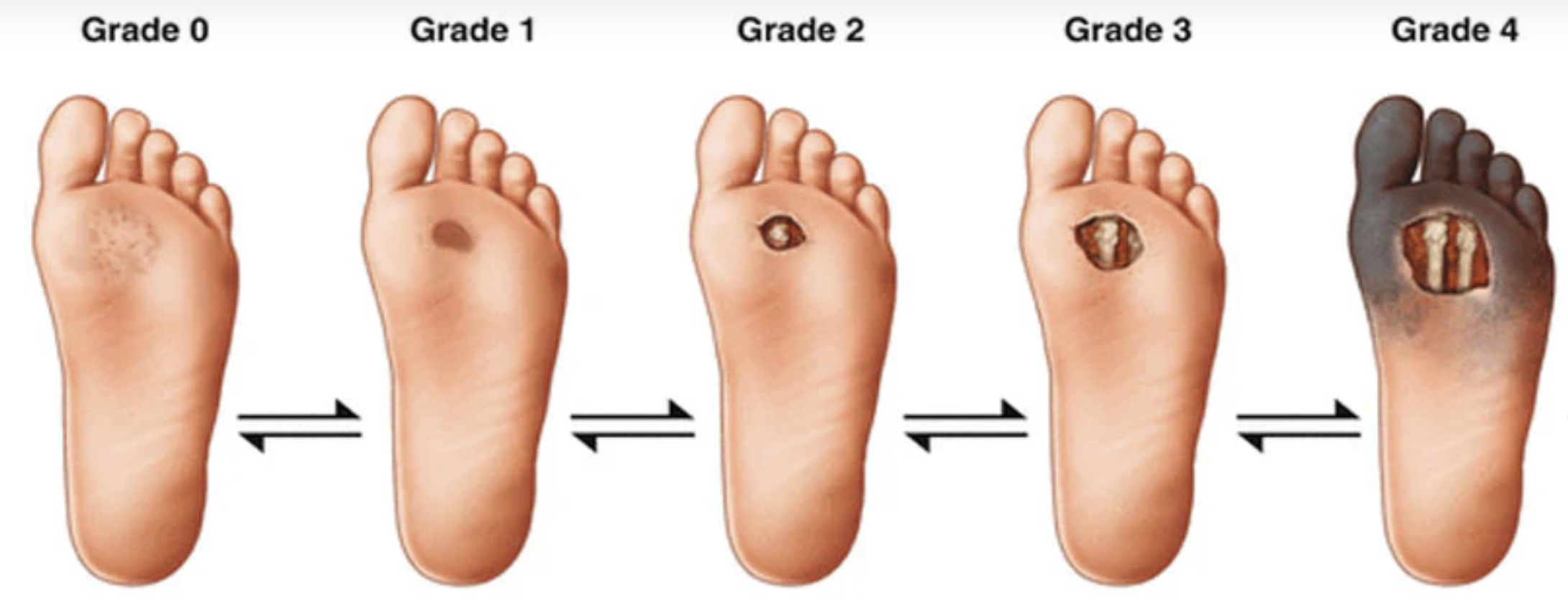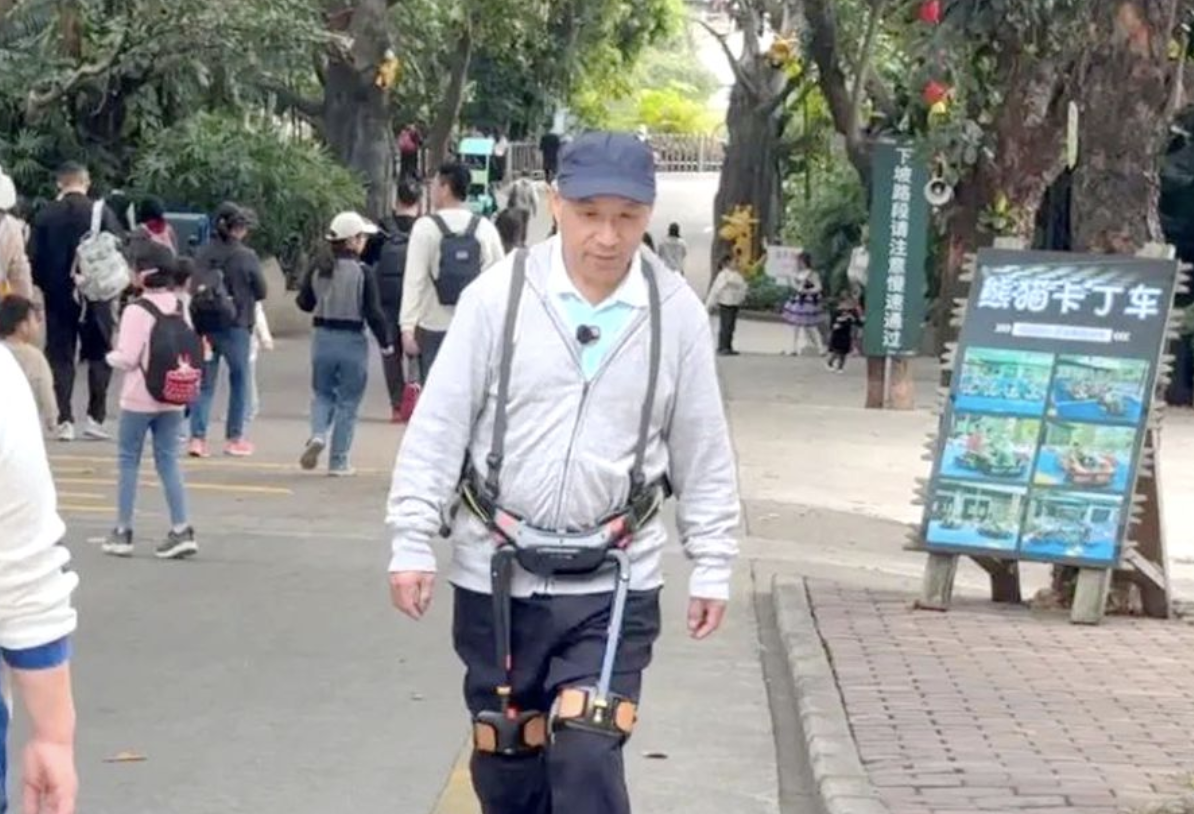I’ve learned something new about myself from every prosthetist I’ve ever worked with. Especially the bad ones.
by Angelina Martinson
Finding a prosthetist is a lot like dating. When you meet them for the first time, you’re nervous. You hope they like you, but you also hope they meet your expectations. You size them up and form an opinion about whether this could be a long-term relationship: “Can I even see myself with this guy in five, ten years?”
I’m kidding—but not really. This is an extremely important, even intimate relationship. You need to be able to trust this person. You need to be able to tell them your hopes and dreams, and they need to be willing to support you in those.
I was only four years old when I became a below-knee amputee, so my first prosthetist was chosen for me—an arranged marriage. We stayed together until I was 18, and then we broke up. I was moving away to college, and it was time to see new people.
I started seeing a new prosthetist in my university town. One of the first things they told me was that they were surprised I wasn’t an above-knee amputee. They made a point of emphasizing this. It felt like they were implying that because I had the “wrong” kind of amputation, my residual limb was difficult, even defective. It’s true that my knee is slightly atypical (it’s turned inward a bit), because I was born with clubfoot and tibia hemimelia. But no one had ever suggested it was a problem that couldn’t be solved. This prosthetist’s fixation on my knee was a big red flag.
Next, this practitioner put me in a different class of prosthesis from the one I had always used. It had a hydraulic ankle that weighed too much for me. It didn’t articulate because it wasn’t compatible with my body. They also switched me from pin-lock suspension to a vacuum system, which made my device even heavier. I went along with these changes because the prosthetist was very sure of themself, and I was very young and uncertain. Above all, I didn’t feel like I was being given a choice. Red flag number 2.
A while later, I told them I wanted to start bicycling more. I rode a bike around campus to help me get to classes quicker, but I wanted to go beyond commuting and pedal for recreation and fitness. I also wanted to shed my cosmetic cover and prioritize functionality over aesthetics. The prosthetist didn’t seem too keen on these goals and didn’t offer any ideas for how to make them happen. Red flag number 3.
This was the first prosthetist I had chosen for myself, all on my own. I hadn’t learned how to advocate for myself yet, but after these three red flags, I realized I would need to do that—and nobody was going to do it for me. If I continued working with a provider who didn’t listen to my needs and concerns, and who put me in a leg that was so heavy that it caused me terrible pain and made it hard to stay active, then only I was to blame. So I broke up with that prosthetist and decided to date around for a bit.
I arranged a meeting with someone at a different clinic. I told them my knee was really hurting, and that I felt the heavy ankle and vacuum suspension were causing the pain. I’d never experienced that type of pain until I switched devices, I explained. The new prosthetist offered a different theory: I was having knee pain because I should have been an above-knee amputee.
Remember red flag number 1? I recognized it instantly this time. I was out of there so quickly. Ever since, whenever a prosthetist mentions this, I have walked out the door immediately. I know my body, I know what works for it, and I know I have had below-knee prostheses that felt great. If I have to convince someone of these things, they are not worth my time.
I decided to try another prosthetist that I had heard good things about. I warned them up front not to raise the above-knee discussion; they agreed that having a below-knee amputation was fine. But when I stated my goal of becoming more physically active, they downplayed the idea. I assured them I wasn’t hoping to become a Paralympian or anything; I just wanted to become more active. But they didn’t encourage me at all. They made me feel like those activities were beyond my reach.
Sound familiar? It was red flag number 3 again. I thanked the prosthetist for their time and never went back.
Although my clinical dating life wasn’t going so well, at least my academic life was in order. I was majoring in biomedical engineering with a focus on musculoskeletal biomechanics, so I was studying the mechanical, neural, and physiological aspects of human motion. In other words, I knew what a prosthesis could do for me if I was given the right device. But that just made it all the more frustrating when I couldn’t find a prosthetist I clicked with. As a kid, I had worn low-cost devices that were reasonably comfortable but quite limiting. As a young adult, I jumped to a very expensive prosthesis that worked against my body, not with it. I felt like I had gone from one extreme to the other, and the experts weren’t helping me find the ideal fit.
I finally settled for a relationship of convenience while in school, but I knew it didn’t have any long-term potential. After I completed my bachelor’s degree, I moved to another state, which meant I needed another new prosthetist. Now that I was out in the real world, I was looking for something that would last. But even though I had my checklist of red flags to help me quickly filter out incompatible clinicians, four years of poor communication and ill-fitting prostheses had left me with serious knee issues. It had reached the point where I started to think I really did need revision surgery to become an above-knee amputee. I was believing what others said about me, instead of standing my ground.
When I got settled in my new city, I met a prosthetist who never mentioned my knee being an issue. Instead, he asked me why I was in an ankle that was above my weight class. When I told him about my knee pain and the limitations it caused, he nodded his head and said things didn’t have to be that way. He assured me I could do the things I dreamed of doing. He was so animated and encouraging, I could hardly believe it. I was in love!
My new prosthetist put me into a much lighter foot with a high energy return. He switched me back to a pin and lock suspension system, which was my preference. When it came to my K-level (an important designation that heavily influences what types of prosthetic devices your insurance will cover), he determined that I was at the top of the scale, K-4. He was exactly what I had been looking for ever since I left home—someone who believed in me and gave me the tools and encouragement I needed to chase my dreams. I could easily see myself staying with him for the rest of my life.
Then a great job offer came along, and I had to move again.
I moved all the way across the country, way too far for a long-distance relationship with my new prosthetist to work. I had finally found someone I was comfortable with, and now I was single again and had to start all over from scratch. It was scary and demoralizing.
But at least I had some experience to build on. In addition to my list of red flags to avoid, I now had a list of prosthetist traits to embrace. I knew what a good relationship felt like. I also had a leg that already worked well for me and didn’t need major modifications, just some routine maintenance. So I felt like I had the upper hand as I reentered the dating scene.
I had moved from the Midwest to the Pacific Northwest, and I absolutely loved my new home. It was the perfect place for me to try out activities I’d always been interested in but was never able to pursue, including hiking, biking, and rock climbing. Unfortunately, all the activity really beat up my prosthesis. I needed a clinician who had the patience to make regular repairs and wouldn’t lecture me about taking it easy.
Luck really seemed to be on my side, because I quickly met someone who did prosthetic research as part of his clinical practice. He could get me into devices that weren’t even on the market yet. I was ecstatic! I loved learning about new technologies and helping to test them in real-life settings. It was an opportunity to mix my education in biotechnology with my personal experience as an amputee. One of the devices we tested gave me the most natural gait I had ever experienced in my life. This experimental leg enabled me to hike through rainforests, paddleboard in Puget Sound, and climb rocks in the Cascades. I even competed in a triathlon. I was finding out that I was capable of so much more than I had ever imagined. That is what a relationship with your prosthetist should feel like.
Then I had to move…again!
This time it didn’t feel daunting. I had this newfound confidence. If I met with someone and didn’t like their attitude or their perspective, I simply walked out. No hard feelings—I just didn’t want to waste my time or theirs. I felt empowered to advocate for myself, to insist on the best, and to demand exactly that. I expected to find an amazing prosthetist—and that’s exactly what happened. I walked into our first appointment and laid out what I had gone through and what I required. After I finished explaining myself, he had a big smile on his face. I asked him why he was smiling, and he said he loved seeing patients who knew what they wanted. He promised he would not get in the way of my objectives and would make sure I could continue doing the things I wanted to do.
At long last, it seemed as if I had reached my happily-ever-after moment. I was with a prosthetist I loved, and I had no plans to move. Things finally felt permanent.
And then he left the practice. I was floored. In all my years of dating prosthetists, I had always done the breaking up. Now I was being dumped. It was such a setback. I felt abandoned.
Another prosthetist in the clinic took over his patients, but I still felt attached to the one that got away. I wasn’t ready for another relationship so soon. After some time, though, I began to form a connection with “the rebound.” He had talked a lot with the former guy about me. He knew my history. He had even helped build some of my devices. So it wasn’t like we were starting from square one. It was like we already had a friendship, and it blossomed into something more. He had sort of been in front of me the whole time.
Finding the right prosthetist is more than just securing a functional device; it’s really about finding a partner who can help me embrace my identity as an amputee. This journey has been filled with challenges, but it has also been incredibly rewarding. Each clinic, and each new prosthetist, has taught me something valuable about myself. I have learned to trust my own voice, advocate for my needs, and never settle for less than what I deserve. And I’ve discovered the joy of finding a prosthetist who supports my goals, believes in my potential, and provides me with the tools and encouragement to live my best life.
Angelina Martinson is a biomedical engineer specializing in medical devices and prosthetic technology. Follow her on Instagram at @adaptiveamputees.


